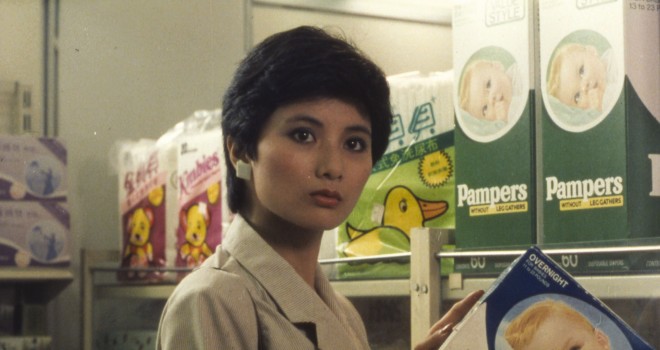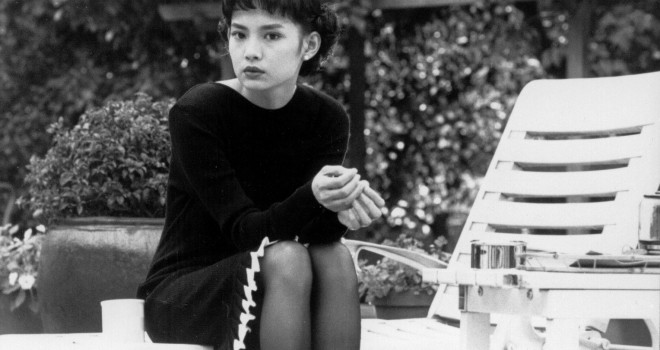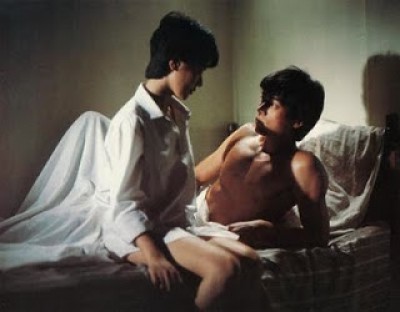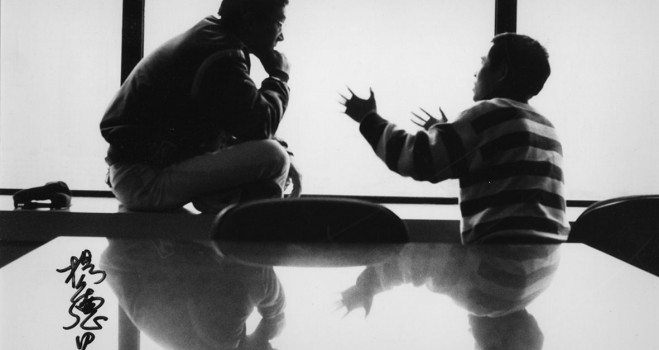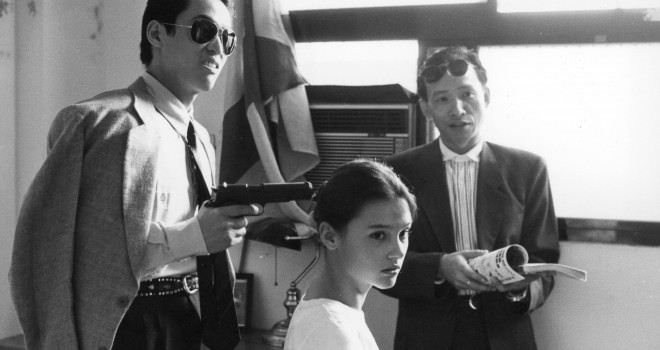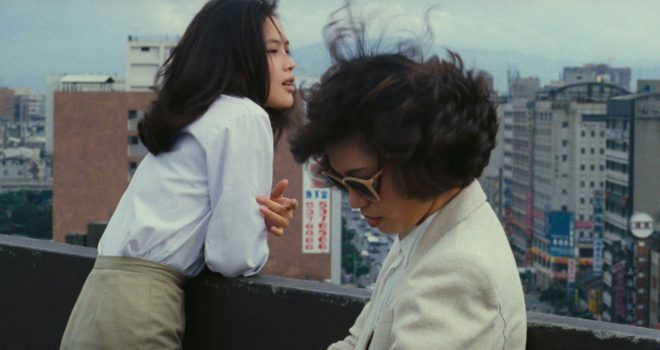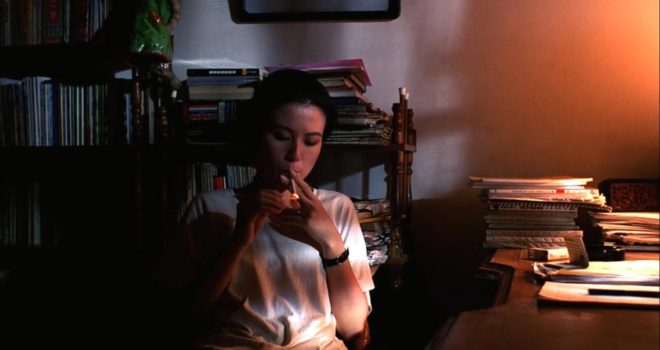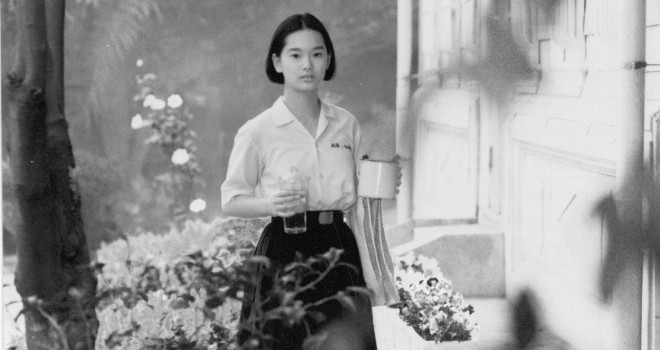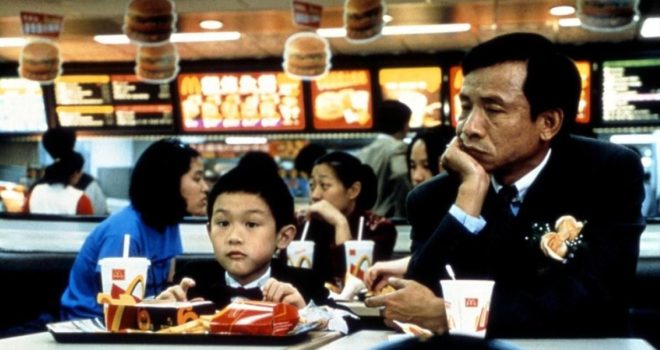«To exchange directly with each one, to thus touch the essence of cinema, and what is most stimulating in the life of an artist.» Edward Yang
Edward Yang’s filmography begins with a child’s face, and ends with a child’s face. The girl looking straight into the camera, as a short prologue to Desires (1982), invites the audience to seize a strong cinematographic concerns that the young Yang-Yang seems to express even more clearly in the last shot Yi Yi (2000): to reveal the bling spots of others, and show them what they heretofore have been unable to see. The delight of childhood, which marks the œuvre of one of the leading Taiwanese filmmakers, is a key issue that Yang refused to leave behind. During the last years of his life, until his death in June 2007, he worked on an animated film, which launched him back to his old passions, comic strips and cartoons. This plunging back into first emotions rings singularly in Yang’s biography, that came rather belatedly into cinema. Born in Shanghai, in China, 1947, when ha was 2 years old his parents moved to Taiwan, immediately after the communist victory against the Chiang Kai-shek’s government. Yang undertakes engineering studies in Taipei before enrolling at the University of Florida. Later on he enrolled in the University of Southern California’s film school. Having decided that he had no talent for filmmaking, he chooses to follow his parents to Seattle, where he worked in a research laboratory dedicated to defense work involving microcomputers. A chance encounter, in a Seattle repertory theater, with Werner Herzog’s Aguirre, Wrath of God (1972), renewed his interest in filmmaking and pushes him to return to Taiwan, where he makes his debut in television and in publicity.
The beginning of the 1980s allows the inexperienced Taiwan filmmakers to see films coming from all over the world, boosting a collective desire for creativity («One found theaters showing a lot of American films, but also European films, in particular Italian, French and German, or Japanese films. It was the pleasure of discovering a new cinema, wide-ranging and to which our eyes were not yet used to that encouraged us to devote ourselves to this form of expression»), Thus is born the Taiwan New Wave, marked by both the Hong Kong and Chinese cinematographic effervescence. Its innovative character is noticeable in the aesthetic and narrative experiences as much as in the cultural and political viewpoints, critical and new. Many filmmakers, screenwriters, producers, actors got moving; variable geometry collaborations according a certain interchangeability of functions, of which the best example is Hou Hsiao-hsien appearing as the lead character Lon in Taipei Story (1985). Yang builds the aesthetic coherence of his first films with young technicians who will become live legends thereafter: the cinematographer Christopher Doyle (That Day, on the Beach in 1983), and especially the sound designer Tu Duu-chih, to which Yang grants a deep-seated place («the sound is as important as the image and, and therefore, must be built-into the cinematographic writing and all work which precedes the mise en scene»).
If the collective films The Sandwich Man (1982) and In Our Time (whose segment Desires) outline and predict the brake through, That Day, on the Beach is the genuine starting point of the Taiwanese New Wave. For the first time Yang has a significant degree of artistic freedom, and will use flashbacks as a means to reveal the motivations behind a murder as much as to draw up the portrait of the victim. Thereafter Yang will often use a modernist narrative structure that weaves several levels of narrative together. This film is representative of many of the concerns that will run throughout Yang’s later career, supported by a series of dichotomies reveling a modernizing Taiwan in the mist of redéfinition itself : balance between what is old and new, tensions between traditional and Western values, as well as a sprawling examination on couples and family. In That Day, on the Beach, Yang’s camera is focused on a female protagonist, portraying the strong contradictions of a society on the cusp of great change, as in most of his later films.
«It was the pleasure of discovering a new cinema, wide-ranging and to which our eyes were not yet used to that encouraged us to devote ourselves to this form of expression.» Edward Yang
Taipei becomes then Yang’s privileged place of observation. He exposes its fast and alienating modernization and occidentalization, through a long-time couple slowly drifting apart in Taipei Story. In this film as in The Terrorizer (1986), the director revisits the thriller genre and uses certain of its themes or situations. Taiwan’s new constructions, cranes and heavy highway traffic indicate the close relationship between these processes and the problematic romande relationship. Yang privileges the intimate, private discussions, interior spaces, and for the most part shows us the city through the building Windows. And even at the time of their furtive incursions to the outside world, the characters are rarely freed from an interior space (car, phone booth). A film director with an urban understanding, Yang then proposes a complementary point of view to that of Hou Hsiao-hsien, more attached to the description of the rural world. But their respective cinemas became more cosmopolite, Yang by integrating foreign characters, Hou by delocalizing his own locations (Café Lumière in Tokyo, The Flight of the Red Balloon in Paris). Yang’s attachment to the evolution of Taipei becomes even more evident in A Confucian Confusion (1994) where voluble bodies struggle against the complexity of city life. Yang abundantly uses dolly shots taken from a car, which consequently becomes a regular milestone in his films, often used during crucial discussions or noisy arguments. In Mahjong (1996), the presence of both Taiwanese and Europeans reflect the deformed image of a new Eldorado that many foreigners consider as the future world capital, fascinated by the metropolis’s ostentatious nature. Monumental digressions in the midst of these four films, A Brighter Summer Day (1991) is largely autobiographical: Yang recalls the painful conditions under which the Chinese emigrant children of Taiwan grew up at the same rhythm as the nationalist government, in 1949. Within this framework the description of the showdowns between youth gangs in early-1960s presents a large-scale view of a generation gap, of which youth violence is an outcome. And contrary to the lyrics of one of Elvis Presley’s eponymous songs, the light seldom «lights up» the screen. Taiwan is a hybrid city marked by the scars left by its successive occupants. In this context, American culture, and in particular rock’n roll, dominate. Elvis’s songs and imitators are omnipresent, significant allusions to the popular American imagery of which Yang’s filmography constantly refers to : Charlie Chaplin, Marilyn Monroe, Prince, etc. In Taipei Story Lon’s idea of leaving for the United States to start up a new life already decode Yang’s ambiguity towards this country: an attractive culture but an invading one, the American dream of a better life is strong but acculturating.
Edward Yang’s last film, Yi Yi, is also his masterpiece, «a cinematographic breakthrough, of which there is only one or two per decade» (F. Bonnaud in Les Inrockuptibles). Yi Yi picks up the thread of some emblematic characters by extending their existence (the young heroine of Desires sees her sexual awakening prolonged by that of the young teenage girl Ting-Ting in a same initiatory trip, in The Terrorizer the photographer is reincarnated into Yang-Yang in order to continue tracking down the invisible, etc). Like an ultimate dead boit, Wu Nien-jen, screenwriter of That Day, on the Beach and key-man of the New Wave, plays NJ, the main character. Yi Yi offers new formal experimentation within fiction narratives while redeploying Yang’s universal capacity to invest themes, his aesthetic singularity (in particular the important graphic work carried out on urban space and urban living, subjected to a rich symbolic interpretation, already seen in Taipei Story and The Terrorizer). Carefully plotted around a Taipei family, Yang shows us the world afresh, reaching universal appeal and achieving his true project: «To exchange directly with each one, to thus touch the essence of cinema, and what is most stimulating in the life of an artist.»
Nicolas Thévenin


